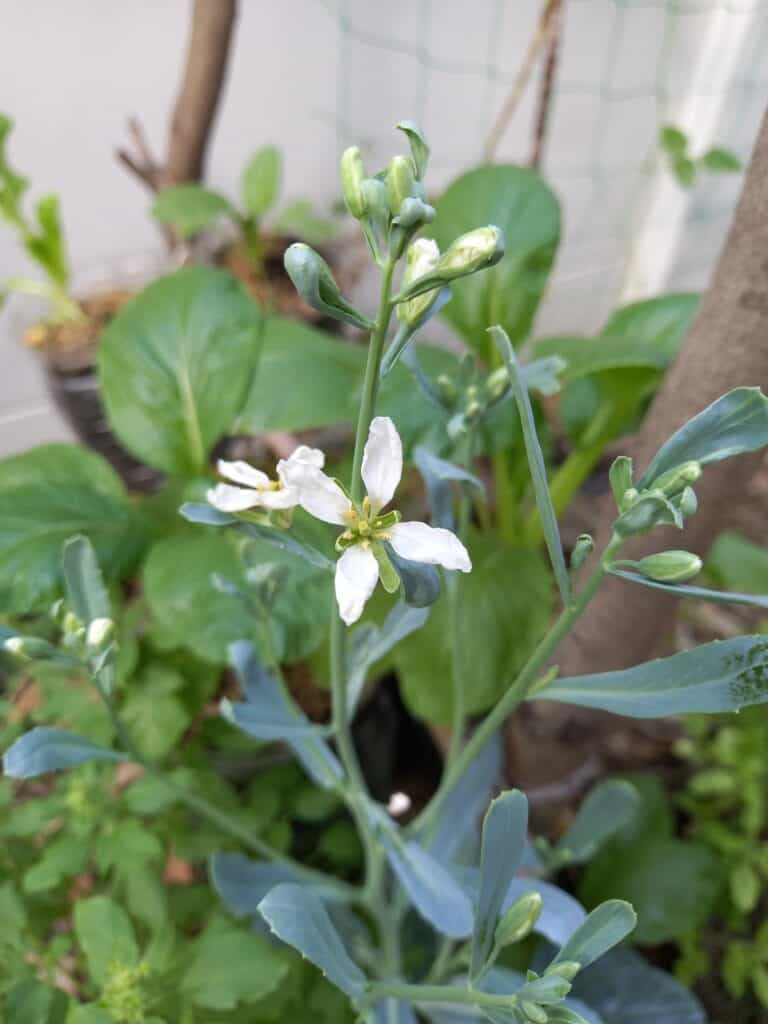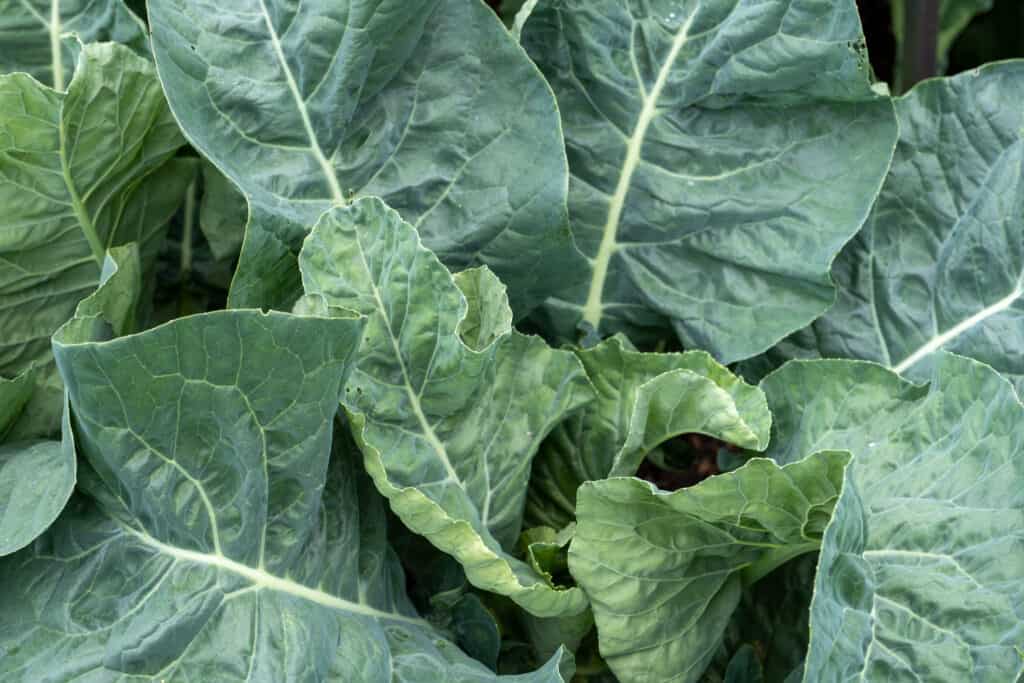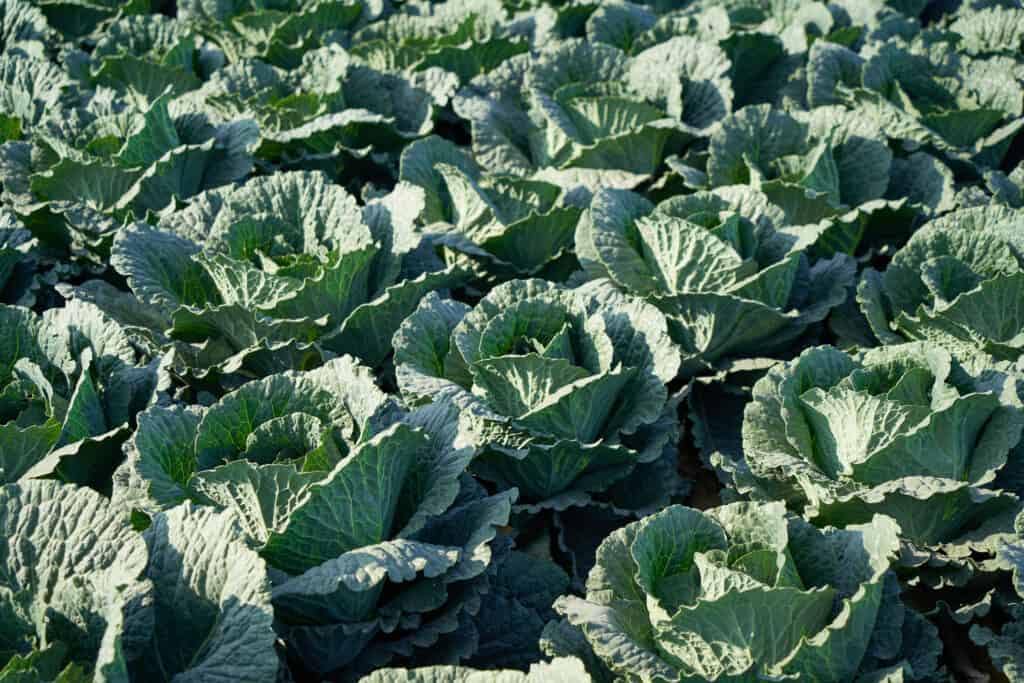Leafy green vegetables like collards are packed with vitamins and minerals. They are great for your health and tasty too, but are you wondering what the difference is between cabbage collards vs. collard greens? There’s not much in it! Let’s take a closer look.
Key Differences Between Cabbage Collards and Collard Greens
The key differences between cabbage collards and collard greens are their leaves and where they are most popular. It’s a sensible question because collard plants have been cultivated for thousands of years in different areas of the world. As a result, many names have evolved and the different species have become confused.
Here are the two main differences in a bit more depth.
Collard greens are loose-headed dark green vegetables with paddle-shaped leaves that are very popular in the USA’s south, whereas cabbage collards are collards with yellow-green leaves and a firmer head. They are more popular in the Appalachian area of the south.
| Cabbage collard (Yellow cabbage collard) | Collard greens | |
|---|---|---|
| Leaves | Paddle-shaped, yellow-green | Paddle-shaped dark green with white veins |
| Head shape | Semi dense, rounded. | Open, loose leaved |
| Flowers | Tiny yellow crosses with four petals | Tiny yellow crosses with four petals |
| Height and Spread | Approximately two feet by two feet | Approximately two feet by two feet |
| Growing Zone | Zone four and above | Zone four and above |
| Toxicity | Not toxic | Not toxic |
| Taste | Mild, sweet flavor | Deep bitter flavor |
What Are Cabbage Collards and Collard Greens?
Collard greens are part of the Brassica Oleracea family and the subspecies Viridis. They are a loose-headed, leafy, cruciferous vegetable that’s particularly loved in the southern United States. Some of the favorite ways to cook collards include mixing them with salted meats, onions, and vinegar.
A cabbage collard is a type of collard with a firmer head, so it’s described as a cross between a cabbage and a collard. The denser head of leaves gives cabbage collard its name, but it’s still a type of collard.
And just in case you wondering, cruciferous vegetables get their name from their four-petaled flowers that resemble a cross, or the older, rarely used term for a cross a “crucifer”.

Collard greens are a cruciferous vegetable named as such because of its four-petaled flowers that resemble a cross.
©Anshann/Shutterstock.com
How Are Collards Different From Cabbage?
Cabbage collards and collard greens are both collards. Collards are different from cabbages even though they are in the same scientific family. The main difference is that collards have loose heads but cabbages usually have tightly packed heads.
Cabbage collards have a semi-dense head of yellow-green leaves so they’re described as a cross between a cabbage and a collard.
Because collards have looser heads, they are better able to cope with high humidity that can lead to fungal disease in cabbages.
What’s the Taste Difference?
Some people say that yellow cabbage collards have a milder, sweeter taste than deep green leafy collards that can taste bitter.
Are Collards Good for You?
Cabbage collard plants are very good for you because even though they are 90% water they’re packed with vitamins including A, C plus lots of manganese that’s essential for good brain and nerve function and regulates blood sugar.

The main difference between cabbage and collards is that collards have loose heads compared to the tightly packed heads of cabbage.
©iStock.com/Monique Shaw
History of Collards
The name collard is a corruption of the old English word colewort or colewyrt or even “coles” for short. It’s what the Anglo-Saxons called any loose-headed cabbage-like plant.
Collards have been cultivated for millennia. The Ancient Greeks and Romans grew several species and not only ate them but used their leaves to draw out infections and drank the cooking water as a tonic.
Collard greens were often grown on slavery plantations in the southern United States and used as slave rations. This was because collards can cope with the extremes of hot and cold seasons.
As a result, some African Americans use collard leaves to represent their heritage including the jazz musician Theolonius Monk and Barrack Obama who included collard greens in his first state dinner. There are also numerous collard festivals held around the States celebrating African American identity such as the very popular event in Port Wentworth, Georgia
Native Origins of Collard Greens
Collard greens are originally native to the Mediterranean area but they have spread around the globe with travelers and settlers. As well as the American south, various forms of collard greens are popular in Africa (where they are called sukuma, muriwo or umBhida), across Europe, the Middle and the Far East.
Growing Zones
Cabbage collards and collard green varieties are cool-season vegetables that grow in the majority of climates. In the USA they tolerate Zone 4 and above.
Although they are often grown as annuals, collards are naturally biennials that are sown in late fall and harvested the following year. In Zone 8 and above they often grow perennially producing a new leafy harvest every few months if they are well fertilized and watered.
As we’ve already found out, collard species have looser heads than most cabbage varieties and this makes them better at coping with heat and humidity. If you love leafy greens but live in a hot area, collards are a better choice than tightly packed cabbage species.
Leaf Differences
The main difference between cabbage collards and collard greens is their leaves.
Collard greens grow on a tall woody stem and have large dark green leaves with white veins. The leaves do not form a head, they’re smooth and resemble paddles.
Cabbage collards grow on the same type of woody stem, but in contrast, have yellow-green leaves that form a semi-dense head. Cabbage collard heads are much more rounded and tightly packed than collard greens.
Both are very attractive to birds, deer, and rabbits so benefit from protective netting at all times.

Cabbage collard plants are packed with vitamins including A, C as well as manganese which is essential for healthy brain and nerve function.
©iStock.com/Arayabandit
Do Cabbage Collards Flower?
Yes they do and we already know it’s where they get the name “cruciferous vegetable” from.
Collard greens and cabbage collard flowers are tiny yellow four-petalled crosses. They bloom in a mass on a tough spray held above their leaves. You can eat the flowers, which are milder and much sweeter than their slightly bitter leaves.
Height and Spread of Collard Greens
According to the Guinness World Records the tallest collard green ever grown measured a whopping 13 feet 4 inches tall. That’s roughly the same height as an elephant. It was grown by Woodrow Wilson Granger in Leesburg, Florida, and measured on 24th May 2007.
Most collard greens won’t reach such great heights. In a garden vegetable patch, they usually make about two feet, but when they’re a perennial they can double this. There are even some Portuguese cultivars that make six feet tall.
Are Collard Greens Toxic to Dogs?
Collard greens and cabbage collards are not toxic to dogs, but they can have an unpleasant effect on their stomach gas if eaten in large quantities!
How to Grow Cabbage Collards vs. Collard Greens
Cabbage collards and collard greens are very easy to grow. They are forgiving enough to cope with most well-drained fairly fertile soil and fare better in cool areas, although they will cope with hot zones too.
Cabbage collards and collard greens are grown the same way. They are planted in late fall, grow over winter, and they are ready for a late spring to early summer harvest. Alternatively, you can put seeds or small pre-bought plants in the ground during early spring.
- Plant out collard seeds approximately one month before the start of fall.
- Space them 20 inches apart.
- Net the area to keep birds, deer, and rabbits at bay.
- Keep them damp but avoid excessive watering that can rot the seeds.
- When the seedlings sprout, surround them with mulch and keep weeds down.
- As they grow it may be necessary to stake them against the wind.
- Keep an eye out for caterpillars!
- Harvest a few lower leaves when they’ve reached 10 inches in length.
- Keep watering, fertilizing, and protecting the plant from pests so you can harvest both cabbage collards and collard greens all spring and summer.
- If you choose to grow collards in a pot, put them outside in early spring once they reach six to eight inches in height.

Although they are often grown as annuals, collards are naturally biennials that are sown in late fall and harvested the following year.
©iStock.com/Wirestock
Which is Best, Cabbage Collards or Collard Greens?
Both these leafy green vegetables are packed with nutrients that’ll boost your health and they are easy to grow.
There’s not much to choose between them, but because cabbage collards have a denser head of leaves, they are more prone to mildew in humid areas, however, cabbage collards are milder in taste. If you don’t like the bitter flavor of dark collard greens, you know which to reach for!
Up Next
- Collard Greens vs. Spinach
- Swiss Chard vs. Collard Greens: What’s the Difference?
- Mustard Greens vs Collard Greens: What’s the Difference?
The photo featured at the top of this post is © chantel/Shutterstock.com
Sources
- National Library of Medicine, Available here: https://www.ncbi.nlm.nih.gov/pmc/articles/PMC8115444/
- Guiness World Records, Available here: https://www.guinnessworldrecords.com/world-records/tallest-collard
Thank you for reading! Have some feedback for us? Contact the AZ Animals editorial team.






